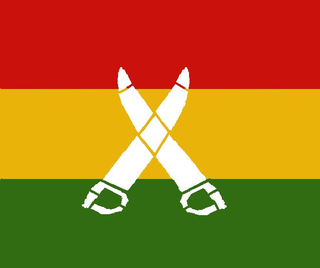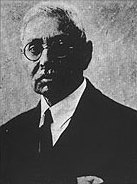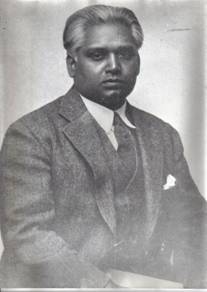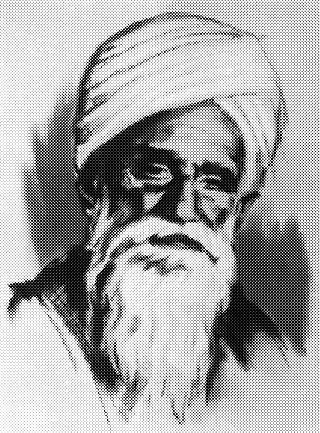
The Ghadar Movement was an early 20th century, international political movement founded by expatriate Indians to overthrow British rule in India. Many of the Ghadar Party founders and leaders, including Sohan Singh Bhakna, would go on and join the Babbar Akali Movement and would help it in logistics as a party and publishing its own newspaper in the post-World War 1 era. The early movement was created by revolutionaries who lived and worked on the West Coast of the United States and Canada, but the movement later spread to India and Indian diasporic communities around the world. The official founding has been dated to a meeting on 15 July 1913 in Astoria, Oregon, and the group would splinter into two factions the first time in 1914, with the Sikh-majority faction known as the “Azad Punjab Ghadar” and the Hindu-majority faction known as the “Hindustan Ghadar.” The Azad Punjab Ghadar Party’s headquarters and anti-colonial newspaper publications headquarters would remain in the Stockton Gurdwara located in Stockton, California, whereas the Hindustan Ghadar Party’s headquarters and Hindustan Ghadar newspaper would relocate to be based in nearby Oakland, a suburb of San Francisco, California.

The Komagata Maru incident involved the Japanese steamship Komagata Maru, on which a group of people from British India attempted to immigrate to Canada in April 1914, but most were denied entry and forced to return to Budge Budge, Calcutta. There, the Indian Imperial Police attempted to arrest the group leaders. A riot ensued, and they were fired upon by the police, resulting in some deaths.

Bagha Jatin or Baghajatin, born Jatindranath Mukherjee ; 7 December 1879 – 10 September 1915) was an Indian independence activist.

Mohamed Barakatullah Bhopali, known with his honorific as Maulana Barkatullah, was an Indian revolutionary from Bhopal. Barkatullah was born on 7 July 1854 at Itawra mohalla, Bhopal in what is today Madhya Pradesh, India. He fought from outside India, with fiery speeches and revolutionary writings in leading newspapers, for the independence of India. He did not live to see India independent. He died at San Francisco in 1927 and buried at Sacramento City Cemetery California. In 1988, Bhopal University was renamed Barkatullah University in his honour. He was also Prime Minister of first Provisional Government of India established at Afghanistan in 1915.
The Revolutionary movement for Indian Independence was part of the Indian independence movement comprising the actions of violent underground revolutionary factions. Groups believing in armed revolution against the ruling British fall into this category, as opposed to the generally peaceful civil disobedience movement spearheaded by Mahatma Gandhi.
Jugantar or Yugantar was one of the two main secret revolutionary trends operating in Bengal for Indian independence. This association, like Anushilan Samiti, started in the guise of suburban fitness club. Several Jugantar members were arrested, hanged, or deported for life to the Cellular Jail in Andaman and many of them joined the Communist Consolidation in the Cellular Jail.

Barindra Kumar Ghosh or Barindra Ghosh, or, popularly, Barin Ghosh was an Indian revolutionary and journalist. He was one of the founding members of Jugantar Bengali weekly, a revolutionary outfit in Bengal. Barindra Ghosh was a younger brother of Sri Aurobindo.

Virendranath Chattopadhyaya, also known by his pseudonym Chatto, was a prominent Indian revolutionary who worked to overthrow the British Raj in India using armed force. He created alliances with the Germans during World War I, was part of the Berlin Committee organising Indian students in Europe against the British, and explored actions by the Japanese at the time.

Taraknath Das was an Indian revolutionary and internationalist scholar. He was a pioneering immigrant in the west coast of North America and discussed his plans with Tolstoy, while organising the Asian Indian immigrants in favour of the Indian independence movement. He was a professor of political science at Columbia University and a visiting faculty in several other universities.

Jadu Gopal Mukherjee was a Bengali Indian revolutionary who, as the successor of Jatindranath Mukherjee or Bagha Jatin, led the Jugantar members to recognise and accept Gandhi's movement as the culmination of their own aspiration.

Kartar Singh Sarabha was an Indian revolutionary. He was 15-years old when he became a member of Ghadar Party; he then became a leading luminary member and started fighting for the independence movement. He was one of the most active members of the movement. In November 1915 at Central Jail, Lahore, he was executed for his role in the movement when he was 19 years old.

Atulkrishna Ghosh was an Indian revolutionary, member of the Anushilan Samiti, and a leader of the Jugantar movement involved in Hindu German Conspiracy during World War I.
The Hindu–German Conspiracy(Note on the name) was a series of attempts between 1914 and 1917 by Indian nationalist groups to create a Pan-Indian rebellion against the British Empire during World War I. This rebellion was formulated between the Indian revolutionary underground and exiled or self-exiled nationalists in the United States. It also involved the Ghadar Party, and in Germany the Indian independence committee in the decade preceding the Great War. The conspiracy began at the start of the war, with extensive support from the German Foreign Office, the German consulate in San Francisco, and some support from Ottoman Turkey and the Irish republican movement. The most prominent plan attempted to foment unrest and trigger a Pan-Indian mutiny in the British Indian Army from Punjab to Singapore. It was to be executed in February 1915, and overthrow British rule in the Indian subcontinent. The February mutiny was ultimately thwarted when British intelligence infiltrated the Ghadarite movement and arrested key figures. Mutinies in smaller units and garrisons within India were also crushed.
The Ghadar Mutiny, also known as the Ghadar Conspiracy, was a plan to initiate a pan-India mutiny in the British Indian Army in February 1915 to end the British Raj in India. The plot originated at the onset of World War I, between the Ghadar Party in the United States, the Berlin Committee in Germany, the Indian revolutionary underground in British India and the German Foreign Office through the consulate in San Francisco. The incident derives its name from the North American Ghadar Party, whose members of the Punjabi community in Canada and the United States were among the most prominent participants in the plan. It was the most prominent amongst a number of plans of the much larger Hindu–German Mutiny, formulated between 1914 and 1917 to initiate a Pan-Indian rebellion against the British Raj during World War I. The mutiny was planned to start in the key state of Punjab, followed by mutinies in Bengal and rest of India. Indian units as far as Singapore were planned to participate in the rebellion. The plans were thwarted through a coordinated intelligence and police response. British intelligence infiltrated the Ghadarite movement in Canada and in India, and last-minute intelligence from a spy helped crush the planned uprising in Punjab before it started. Key figures were arrested, and mutinies in smaller units and garrisons within India were also crushed.

Baba Sohan Singh Bhakna was a Sikh revolutionary, the founding president of the Ghadar Party, and a leading member of the party involved in the Ghadar Conspiracy of 1915. Tried at the Lahore Conspiracy trial, Sohan Singh served sixteen years of a life sentence for his part in the conspiracy before he was released in 1930. He later worked closely with the Indian labour movement, devoting considerable time to the Kisan Sabha.

Vishnu Ganesh Pingle was an Indian revolutionary and a member of the Ghadar Party who was one of those executed in 1915 following the Lahore conspiracy trial for his role in the Ghadar conspiracy.
William Charles Hopkinson (1880–1914) was an Indian police officer and later an immigration inspector in the Canadian Immigration Branch in Vancouver, British Columbia, who is noted for his role in infiltration and intelligence on the Ghadarite movement in North America in the early 1900s.
Harnam Singh Saini was a notable Indian revolutionary who participated in Ghadar Conspiracy and was hanged by British colonial government on 16 March 1917 in Lahore for instigating revolt against the empire. He was tried under third Lahore Conspiracy Case trial.

Mewa Singh Lopoke was a Sikh activist in Canada who was a member of the Vancouver branch of the Ghadar Party, which called for the overthrow of British rule in India. On October 21, 1914, Mewa Singh murdered a Canadian immigration inspector, W. C. Hopkinson, a political act of violence for which he was executed by the Canadian government. In the eyes of Sikh Canadians, Mewa Singh's assassination of Hopkinson was a display of martyrdom, one which they commemorate annually.













